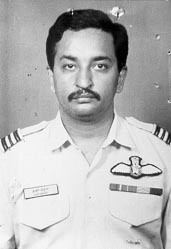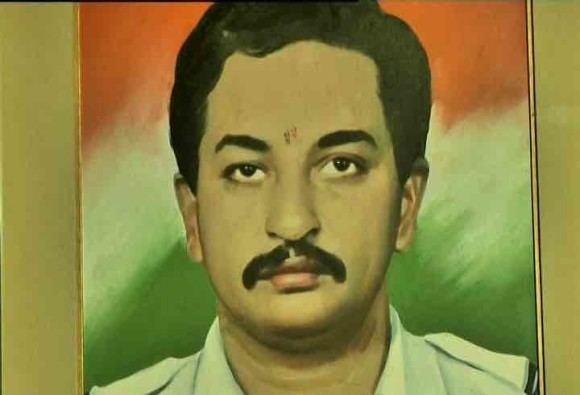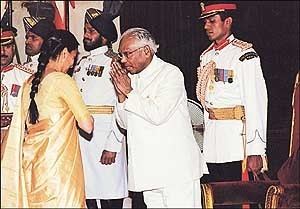Name Ajay Ahuja Years of service 1985–1999 | Rank Squadron Leader | |
 | ||
Unit Golden Arrows – Squadron No. 17 Died May 27, 1999, Kargil district | ||
Education National Defence Academy | ||
The high low formula by ajay ahuja
Squadron Leader Ajay Ahuja, VrC was a fighter pilot of the Indian Air Force who was killed by the Pakistani military in the 1999 Kargil War in Kashmir. His death was the cause of the most angry public conflagration between India and Pakistan at the time.
Contents
- The high low formula by ajay ahuja
- Melissa porter introduces ajay ahuja
- Early life and career
- War Operations
- Circumstances of death
- Reaction and aftermath
- Return and cremation
- Commemoration
- References

Melissa porter introduces ajay ahuja
Early life and career
Ajay Ahuja was born in Kota, Rajasthan. He did his schooling from Saint Paul's Senior Secondary School, Mala Road Kota, a renowned missionary school for boys. He graduated from the National Defense Academy and was commissioned a fighter pilot on 14 June 1985 in the IAF.

As a fighter pilot he toured on the MiG-23 fighter-bomber and MiG-21 variants, as well as instructional flying experience of over 1,000 hours spent teaching ab-initio pilots. Squadron Leader Ahuja was posted to the Killi Bhisiana Airbase at Bhatinda, Punjab, India in 1997. He had only just become the Flight Commander of Squadron No.17 Golden Arrows (a specialist photo-reconnaissance squadron), when the Kargil War broke out in May–June 1999.
War Operations

On 27 May 1999, as part of Operation Safed Sagar in Kargil, a photo reconnaissance mission was launched over the Indian side of the line of control in Kashmir. A member of the mission, Flt Lt Nachiketa ejected from his MiG-27L after an engine flame out. Sqn Ldr Ahuja stayed over enemy positions to help the rescue attempts knowing full well the existence of enemy surface-to-air missiles in the area. However, his MiG-21MF fighter, C-1539, was hit by a shoulder-fired FIM-92 Stinger. Ahuja gave a radio call – "Hercules, something has hit my plane, possibility of missile hit cannot be ruled out, I am ejecting over...(location).". IAF authorities lost track of his aircraft and all communication shortly afterward.
Circumstances of death

According to the data released by the Indian Air Force, Ahuja's aircraft had been within the Indian side of the Line of Control, a ceasefire line and pseudo-border agreed upon by India and Pakistan in the early 1970s to maintain status quo in Kashmir. A post-mortem examination conducted at the Srinagar Base Hospital claimed that Ahuja had landed safely after ejecting from his plane, but had been killed later by Pakistani soldiers.

The post-mortem report of Squadron Leader Ajay Ahuja spoke of three grievous wounds:
- There is a penetrating gunshot wound; entry near right ear, exit near the external orifice of left ear.
- Gunshot wound: entry 2 cm medial to right nipple, exit near left iliac crest damaging internal viscera like liver, intestine and peritonium.
- Compound comminuted fracture left knee.
- Suffered multiple punctured wounds over left and right thighs, rupture of right lung, injury to neck vessels, small intestine and left liver.
It was reported that the left knee fracture was sustained when he parachuted down, but the gunshots show that he landed alive and was shot. And his death was called as a cold blooded murder.
Reaction and aftermath
On 15 June 1999 The Deputy high commissioner of the Pakistani Embassy in New Delhi was summoned and a notice for the breach of Geneva conventions was submitted for the torture and killing of the prisoners of War during the Kargil War. The Government of India lodged a protest with Pakistan's ambassador, accusing the Pakistani paramilitary forces of having fired at Ajay while still descending in his parachute. Pakistani authorities denied the accusations and suggested Ahuja was killed due to accidental injuries during the ejection or landing. No further investigations were carried out by either government nor impartial, outside entities and the case remains unresolved.
Return and cremation
On 29 May 1999, Ahuja's body was flown to the local Air Force station from Srinagar by an Indian Air Force plane. Angry public demonstrations broke out there, at his cremation, and near the Pakistani embassy in Delhi.
Commemoration
Ahuja remains a great hero for Indians, and his widow and family are often honoured guests at patriotic public events and official ceremonies. The family received much support from Government authorities and Indian political leaders, as well as emotional and financial support from people across India. A statue of Ahuja was installed at the nearby crossing on the Bhatinda-Muktsar road.
On 15 August 1999, India's 52nd anniversary of Independence, Squadron Leader Ajay Ahuja was posthumously awarded the Vir Chakra, one of India's highest gallantry honours for military personnel.
